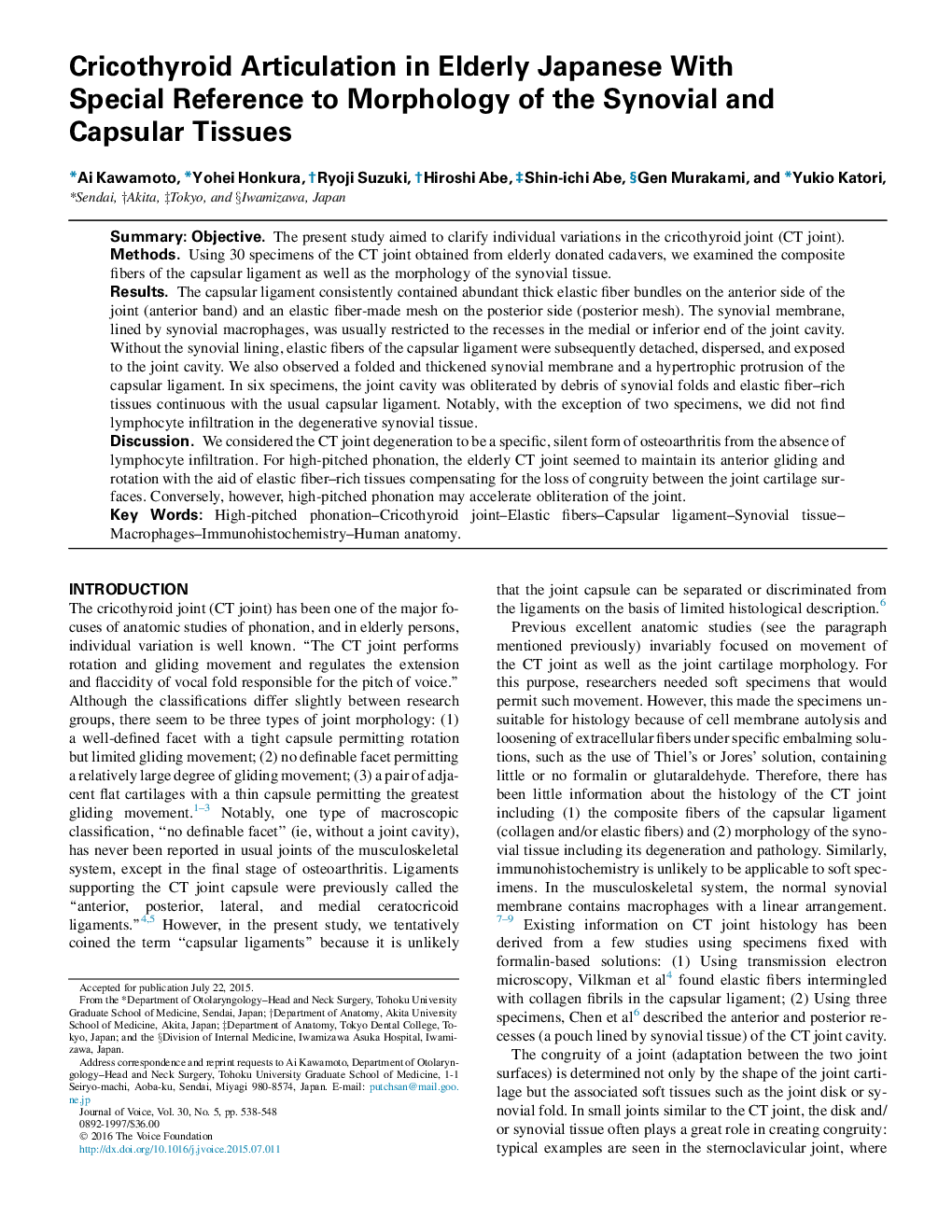| Article ID | Journal | Published Year | Pages | File Type |
|---|---|---|---|---|
| 5124478 | Journal of Voice | 2016 | 11 Pages |
SummaryObjectiveThe present study aimed to clarify individual variations in the cricothyroid joint (CT joint).MethodsUsing 30 specimens of the CT joint obtained from elderly donated cadavers, we examined the composite fibers of the capsular ligament as well as the morphology of the synovial tissue.ResultsThe capsular ligament consistently contained abundant thick elastic fiber bundles on the anterior side of the joint (anterior band) and an elastic fiber-made mesh on the posterior side (posterior mesh). The synovial membrane, lined by synovial macrophages, was usually restricted to the recesses in the medial or inferior end of the joint cavity. Without the synovial lining, elastic fibers of the capsular ligament were subsequently detached, dispersed, and exposed to the joint cavity. We also observed a folded and thickened synovial membrane and a hypertrophic protrusion of the capsular ligament. In six specimens, the joint cavity was obliterated by debris of synovial folds and elastic fiber-rich tissues continuous with the usual capsular ligament. Notably, with the exception of two specimens, we did not find lymphocyte infiltration in the degenerative synovial tissue.DiscussionWe considered the CT joint degeneration to be a specific, silent form of osteoarthritis from the absence of lymphocyte infiltration. For high-pitched phonation, the elderly CT joint seemed to maintain its anterior gliding and rotation with the aid of elastic fiber-rich tissues compensating for the loss of congruity between the joint cartilage surfaces. Conversely, however, high-pitched phonation may accelerate obliteration of the joint.
